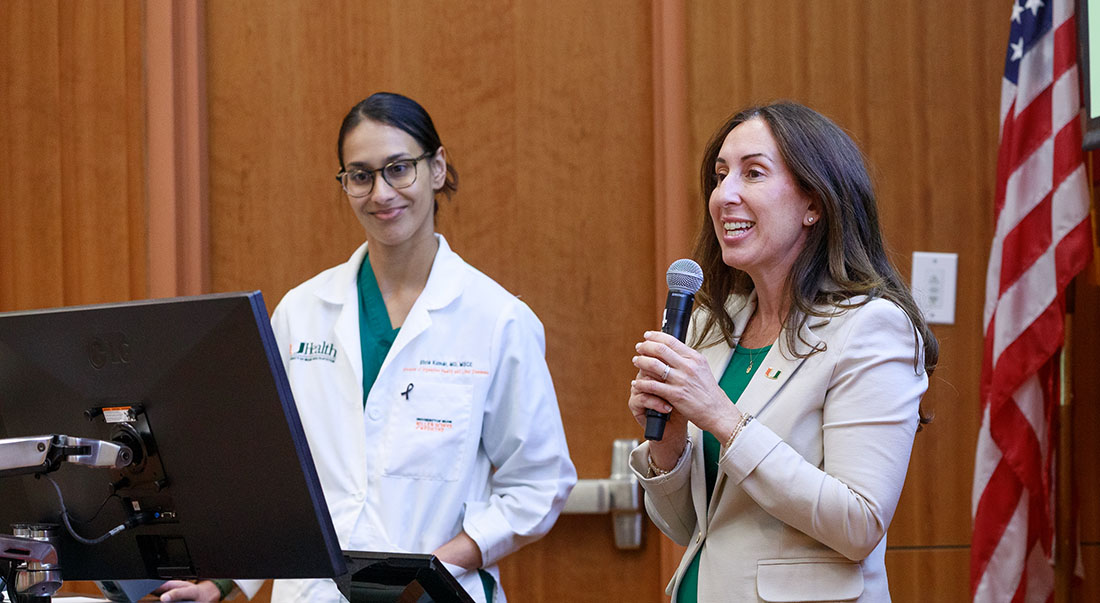 |
Women’s eyes change over time—age, hormones and eye disease can all play a factor in their eye health. Another risk to women’s vision is their longer life span. According to a study published in JAMA Internal Medicine women live an average of five years longer than men, which puts them at greater risk for eye diseases such as macular degeneration, cataracts and glaucoma. Recent data from the American Academy of Ophthalmology, (AAO) indicates that women make up 65 percent of AMD cases, 61 percent of glaucoma and cataract patients, and 66 percent of patients who are blind.
April is Women’s Eye Health and Safety Month, which offers ECPs a perfect opportunity to educate their female patients about these threats to their eye health. VMAIL Weekend reached out to several eye doctors to get their take on women’s vision needs. Here’s what they had to say.
New York City-based ophthalmologist Ashley Brissette, MD, MSC, FRCSC, is educating her patients on how to be more aware of potential vision health concerns, particularly dry eye, which is more common in women due to hormonal changes. She noted that in her office Kelly Vision, she sees women in their 20s and 30s who may be at risk for conditions like dry eye disease, especially due to lifestyle factors such as prolonged screen time or wearing contact lenses.
 |
|
| Ashley Brissette, MD, MSC, FRCSC. |
She said hormonal changes related to birth control or pregnancy can also influence eye health, potentially causing changes in vision or dry eye symptoms.
“In their 40s and 50s, they may begin to experience age-related changes like presbyopia, which affects near vision. After menopause, hormonal shifts can increase the risk of dry eye syndrome and conditions like glaucoma. Women are also more likely to develop age-related macular degeneration (AMD) and cataracts in their 60s and beyond,” she said. “Additionally, if women have conditions like diabetes, they are at higher risk for diabetic retinopathy, which can affect vision at any age. Regular eye check-ups are important to monitor and manage these risks.”
Dr. Brissette said regular eye exams are important to be able to detect eye disease early, adding that in her practice, dry eye disease is something she commonly sees affecting women, particularly due to hormonal changes, contact lens use and lifestyle factors.
“Traditionally, the go-to solution was recommending eye drops, but we now have more advanced in-office procedures that are incredibly effective in treating dry eye disease. These treatments not only provide significant relief from discomfort but can also offer cosmetic benefits, such as improving the appearance of the eyelids,” she said. “Patients are loving the results, as these procedures not only address the symptoms of dry eye but also enhance their overall eye health and appearance, providing a more comprehensive solution to the problem.”
 |
To reduce the risk of developing eye disease, Dr. Brissette recommends maintaining good eye health. This includes scheduling regular eye exams, protecting the eyes from UV rays with proper sunglasses, and eating a diet rich in nutrients like vitamins A, C and omega-3 fatty acids.
She noted it is also important to make sure to routinely replace eye makeup, wash brushes and start an eyecare routine. Every night women should take off the eye makeup, double cleanse with an eyelid cleanser, and then hydrate with an eye cream.
Dr. Brissette recognizes that women from lower-income communities or rural areas often face challenges accessing affordable eyecare, which can lead to delays in diagnosing conditions like glaucoma or macular degeneration. “Racial and ethnic disparities also play a role, with women of color, particularly Black and Hispanic women, experiencing higher rates of certain eye diseases and often receiving less timely care,” she said.
To help improve access to care, Dr. Brissette created Daily Practice by Dr. B., which helps support organizations that are working to close the gender gap in eyecare and blindness globally. Proceeds from the sale of these products are donated to foundations that are fighting blindness.
“Women may be more likely to take on caregiving roles, which can sometimes prevent them from prioritizing their own health. Increasing access to eyecare, promoting health education, and addressing these disparities are key to improving women’s eye health across the U.S.,” she said.
 |
|
| Maria Sampalis, OD. |
Maria Sampalis, OD, and owner of Cranston, Rhode Island-based Sampalis Eye Care, said that women should be aware of the risk of developing eye health issues at any age, but that they should expect to see changes around menopause. She recommends patients seek regular eye exams to prevent future issues and wear sunglasses to reduce the chances of developing cataracts and macular degeneration.
“As eyecare professionals, it’s crucial to recognize the unique eyecare needs based on gender,” Dr. Sampalis said. “Patients often present with a wide range of concerns, and we must be at the forefront of addressing these needs to ensure the best possible care.”
Socioeconomic factors can often limit women’s access to care, making them more susceptible to developing eye disease. Dr. Sampalis believes there are societal pressures that can increase the risk of developing eye health issues, including lack of awareness and lack of access to care. Additionally, she said many women are caregivers who often wait on taking care of themselves, making others the priority. Cost is also a significant factor in access to care.
She said more needs to be done to improve public health information. She added that ODs should also be advocating for change to ensure that patients have affordable and easy access to care.
Supporting Women Globally
 |
|
| Gerry Leinweber, OD. |
Gerry Leinweber, a Red Deer, Alberta-based OD, has seen firsthand the impact that having access to care can have on preventing more serious eye conditions. He and his team at Canadian Vision Care (CVC) conduct eye clinics around the world in underdeveloped countries, including Jamaica, Malawi and the Philippines.
Dr. Leinweber said that women in these countries generally outnumber men at the clinic he runs in Jamaica. He said women’s longer lifespan simply puts them at a higher risk of developing eye disease. He noted that statistically school kids who visit the clinic are generally split 50/50 male to female, while seniors are split 70/30 in favor of women.
“In developing countries, conditions are harsher on men, so they die younger,” he said, adding that subsequently, it’s not necessarily that women are at a higher risk of getting eye disease, but because they live longer, it makes them more likely to develop it.
He said access to clinics like the ones operated by CVC are a critical long-term solution.
During Women’s Eye Health and Safety Month, the experts at Prevent Blindness advise women to follow the following health suggestions in order to protect their vision and eye health.
- Following a healthy diet.
- Exercising regularly.
- Avoid smoking.
- Learning about any family history of eye diseases, as some may increase their risk of disease, and discussing it with their eyecare provider.
- Seeking treatment early for any conditions that can lead to vision impairment and receiving follow-up care.
 |
|
| Kira Baldonado. |
“Throughout their lifespan, women will likely undergo changes to their vision,” said Kira Baldonado, Prevent Blindness vice president of public health and policy. “Prevent Blindness continues to work to educate all on the importance of access to quality eyecare and affordable treatment, especially women, who are at higher risk of vision impairment and blindness.”
To ensure women ages 65 and over have access to vision care, the AAO’s EyeCare America offers eye exams at no out-of-pocket cost to those who qualify. On April 7, the minimum age will be lowered to 18. Additionally, Prevent Blindness also offers a free listing of financial assistance services in English and Spanish here.
Eyecare providers looking for additional resources to share with their patients can visit the Prevent Blindness website for graphics, resources and videos by clicking here.
 |
link







More Stories
There’s a Simple Solution to Protect Your Eyes From Screens : ScienceAlert
What To Know About Diabetic Macular Edema (DME)
Prevent Blindness Names Matt MacDonald, President and Global Head of Managed Care at EyeMed Vision Care, as Chair-elect of its Board of Directors